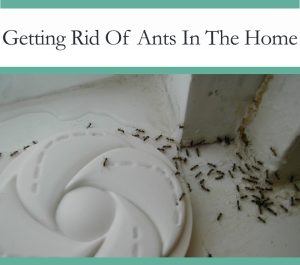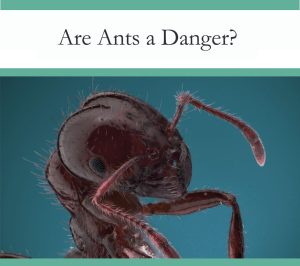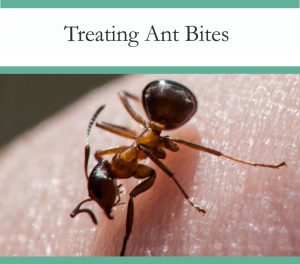What Do Bed Bugs Look Like?
Updated: Jan 30th 2024, by Dan Crosfield
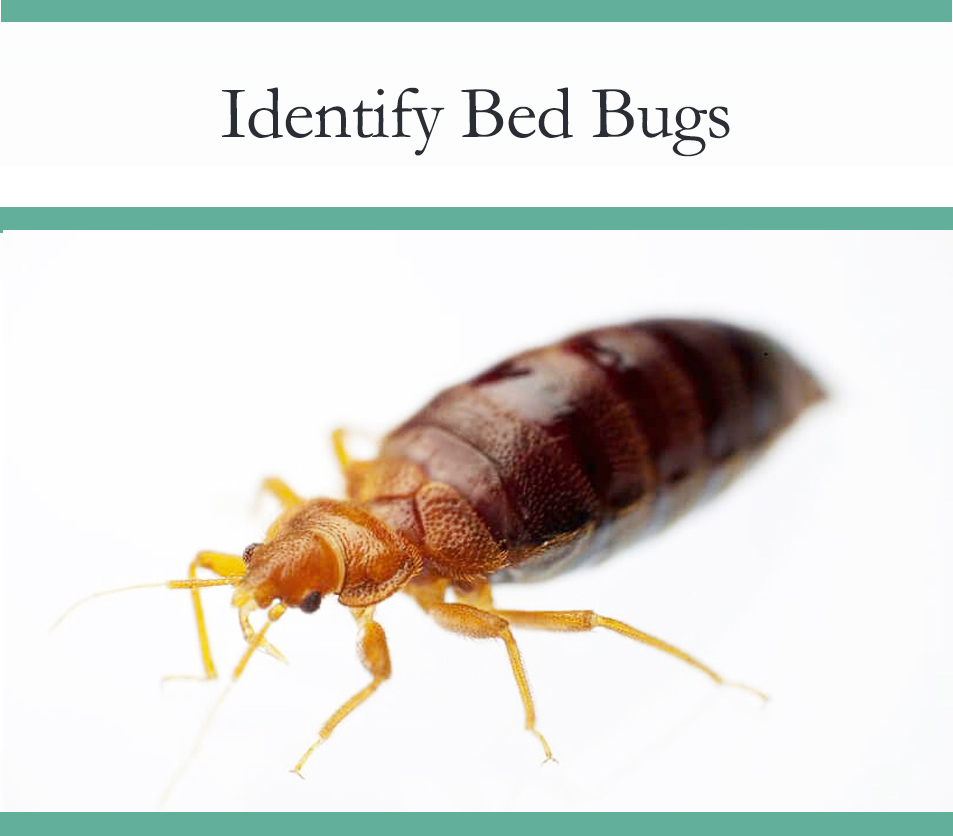
Quickly identify bed bugs in your home with this visual guide. 50+ images and video’s that explain what do bed bugs look like, how you can spot them, where bed bugs are found and how to get rid of them.
What do Bedbugs Look Like?
Adult bedbugs are around 3/16 of an inch or 4 to 5 mm long. They have oval-shaped bodies, and look slightly flat across the top unless they have recently fed human blood. Their color varies from red to orange to brown. If you imagine an apple seed with six legs, you’re pretty close.
Like other insects including fleas and ticks, bedbugs need to drink blood to live. However, unlike some other blood feeders, bed bugs don’t spread disease and are harmless beyond the itchy bites – and psychological distress of a bed bug infestation – they cause.

How to Identify Bed Bugs:
- Size: 3/16 to one quarter of an inch
- Shape: oval, tapering slightly toward the head. Flattened on top unless full of blood.
- Color: rusty reddish brown, turning to bright red after a blood meal. The color comes from the blood they eat, and hungry bedbugs become a paler orange car as they digest the blood they have consumed.
- Location: found on bedding, mattresses (especially around the seams), curtains, on family pets, clothing and yes, on you.

20 to 30 years ago, if you knew what a bedbug looked like, you were either very well-travelled or very unlucky. For a long time in the latter half of the 20th century, these pests were extremely rare. So rare that many people began to think that they were an urban myth.
But unfortunately these days, bed bugs are very real. Today they can be found in hotels, motels, nursing homes, and your home. We’ve created this comprehensive guide to help you identify these pests no matter where they are hiding.
In the last decade or two, these creatures have made an astonishing comeback. These days, there isn’t a city or town on earth that isn’t home to these creatures. So if you’re wondering if you have bed bugs – well, you might. Read on and see how to tell if these insects are feeding on you.
What are Bed Bugs?
Bed bugs are insects of the Cimex type , which means they have six legs. Adult bed bugs can be up to 3/16 of an inch in length and are generally a reddish-brown color. They are most definitely visible to the naked eye. They are not microscopic. In terms of size, shape, and color, they are similar to an apple seed. An apple seed with six legs. However, young bed bugs are much harder to spot because they are much smaller than adults. Plus, before they take their first blood meal, young bed bugs are almost transparent.
In most cases these creatures scare people. And it’s not surprising, given that they feed on us. But where there’s fear, there’s room for misconceptions and misinformation. If you want to determine if you have these bugs, and how to get rid of them, you need to know a little bit about them. So here are the facts.
Bed Bugs prefer to feed on human blood, more than animals
These creatures feed on blood. Specifically, human blood. They will bite other mammals such as cats and dogs if they need to feed. But they prefer human blood to any other food source. This is what makes them such an irritating pest, and what inspires so much fear of this small creature.
Bed bugs, unlike mosquitoes, can’t fly. And unlike fleas, they can’t jump. They need to crawl to anywhere they want to go. But while these bugs are large enough to be seen by people, they are very good at hiding. Their flattened bodies allow them to squeeze into tiny cracks and crevices where they can hide during the day, waiting for nighttime when they will come out and feed.
Bed Bugs Reproduce…Fast!
One thing to bear in mind is a bed bugs ability to reproduce, with one female being able to start a reproductive series ending in 38 million bed bugs after only 12 months! A single female can lay hundreds of bed bug eggs, so bed bug infestations can quickly get out of control.

Are Bed Bugs Dangerous?
No, Bed bugs are annoying, pestering, and gross but they are not dangerous as they do not carry any diseases. Animals that feed on human blood can often be dangerous via the spread of disease. Mosquitoes, for instance, kill millions of people worldwide every year, making them one of the most dangerous animals on the planet. Fortunately, bedbugs are very bad at spreading disease. This is something that has been extensively studied because, given the prevalence of the species, if they did spread disease, we would be in a lot of trouble.
Bed bugs reproduce quickly. One female can start a reproductive series ending in 38 million bed bugs after only 12 months!
But by and large, they don’t. However, they are potential vectors of Chagas disease. This disease occurs in South America and is usually spread by kissing bugs, a distant cousin of the bedbug. However, a study found that bedbugs can also spread this disease. On the plus side, though, this has only been observed in the laboratory, and not in the real world.
While bed bugs may be a nuisance, they are not dangerous.
So these creatures don’t spread disease. But it would be a stretch to call them harmless. If a bedbug bites your skin, you won’t feel it right away because the bugs excrete a tiny amount of anesthetic before feeding on people. Their bites cause itchy red welts on the skin of most people afflicted with these parasites, and these bites can be numerous once the population grows. Which it will, given the creature’s extremely high reproductive rate. Living with an infestation is enough to upset even the strongest of us. The constant biting of these insects can cause emotional stress and even a form of post traumatic stress disorder. And being able to identify bed bug bites can help you spot a bed bug infestation faster.
Where do Bed Bugs Live?
Humans are this creature’s food source. And so they like to stay close to us. However, unlike some other parasites, they don’t live on human bodies. This is important to understand, because other parasites such as lice and scabies do live on humans. But again, bedbugs do not live on people. Our bodies are a little too warm for these creatures to be comfortable, and besides, they don’t like to stay on anything that moves around too much. Unlike lice, they can’t cling on to human hair to avoid being dislodged. So while they can travel on people for short amounts of time, they are far more commonly found in clothes and furniture.
Bed Bug Infestation is rarely due to a lack of hygiene.
Unsurprisingly, their favorite place to live is usually the bed. This is because most people spend a large portion of their day in bed. If you sleep for eight hours a night, that means you spend a full third of your life in bed. For this reason, beds are the number one place to find the insects. Especially the seams along the sides of mattresses. These offer great places for them to hide where they can be close to people in order to bite them.
But don’t make the mistake of thinking they can’t be found anywhere else. They will also live in living room furniture, such as sofas and armchairs. They can hide in cracks and crevices in wooden furniture, too. And it’s not just homes. Coffee shops, movie theaters, buses, trains, planes, hospitals, and especially hotels – they can live almost anywhere that offers them a supply of human blood.
- mattresses
- box springs
- bed frames
- headboards
- pillows and bedding
- inside cracks or seams of furniture
- carpeting around baseboards
- spaces behind light switches and electrical outlet plates
- curtains
- clothes
If you suspect that you may have bedbugs, the bed is the first place to check. Inspect the seams of your mattress, your sheets and pillows, and any cracks and crevices in your bed frame. After you check these areas, move on to upholstered furniture in both the bedroom and living room. After that, check wooden furniture such as tables and chairs, bookshelves, dresses, bedside tables, and so on. These pests are good at hiding. But they can’t stay hidden forever.
How Do You Get Bed Bugs?
These creatures are excellent hitchhikers. Bedbugs can’t fly or jump the way that fleas do, but they often hide in luggage, furniture, cardboard boxes, and anything else people move around. They typically don’t like to travel on human bodies, but they may hide inside the clothes people wear. They can survive traveling in the luggage hold of a plane, and this is one of the major factors that has allowed them to spread across the world. These creatures go wherever we go.
Second hand furniture is a very common way to get bugs. Sometimes, people can have infestation without realizing it. And when they sell or donate their furniture, they may be selling or donating bugs too.
You can also get bedbugs from hotel rooms. And it doesn’t have to be a low-quality hotel. Because of their high turnover of guests, hotels often have bug problems that they may not be aware of. All it takes is one female bug to climb inside your suitcase and come home with you. Before long, you’ll have a major problem.
Because bed bugs spread so easily, these insects can be found almost anywhere that humans can. Think coffee shops, bars, airport lounges, planes, buses, movie theaters, concert halls – bedbugs have been found in all of these locations. They have even been found hiding inside library books, making it easy for them to spread throughout the city as the book gets circulated. Ultimately, almost anywhere you go, you run the risk of coming into contact with these insects.
Treatment – What to do Against Bed Bugs
It isn’t hard to kill a bedbug. They are insects, after all. You can squash them like any other arthropod. You can spray them with insect spray. There are various home remedies, including rubbing alcohol and some essential oils, that will kill them on contact. Diatomaceous earth also wipes out these small creatures.
What is far harder is killing all the bedbugs. But this is what it takes to solve the problem. If a single adult female survives your attempts to wipe them out, she can start laying eggs and restart the infestation all by herself. And because they are so small and so good at hiding, it’s very difficult to track down each and every one of them. This is what makes it very difficult to successfully perform a treatment by yourself. Often, the best and only way to get rid of them is to call a professional exterminator near you.
However, difficult isn’t the same as impossible. Here are some things you can try:
- Wash and dry all fabrics. Heat kills bedbugs. So regularly washing your bedclothes in hot water and running them through a dryer on high heat will help kill lots of these creatures. Use the hottest cycle you can, and try to only half fill the dryer so that it gets nice and hot. Store your clean clothes and other belongings in plastic bags tied shut to make sure bugs can’t get inside.
- Inspect all furniture. Look for bed bug droppings.Kill any insect you find. Regular spray can do the job. But if you want something more effective and ecologically friendly, consider using a steam cleaner. The heat from the steam kills not only adults but also the eggs, significantly reducing the population without using any pesticides.
- Vacuum regularly. A carpet isn’t their favorite place to live, but they will hide there, especially where furniture sits on top of the carpet. Regular vacuuming will kill any that get swallowed up by the machine and help to keep the numbers down.
- Reduce clutter. These critters don’t care whether your dirty or clean. As long as you have blood, you’re a target for these pests. But having a lot of clutter in your home creates more places for them to hide. Keeping your place neat and tidy will help you find these parasites more quickly.
Caution!
If you do find bed bugs in your home, or you suspect they might be there, be careful before you reach for pesticide spray. Knowing you have them is hard to take, and it’s tempting to want to take action. But many pesticides are ineffective,, and some, such as foggers and bug bombs, can actually make the problem worse. Also, because of the widespread use of pesticides against them, they are becoming resistant to some of the most commonly used chemicals on the market.
Before you do more harm than good, you may want to consult with a local pest-control company in your area to get some advice.
Dial (888) 409-1728 for a quote! We will help you pick the best possible Pest Extermination service provider in your area.
Bed Bug Symptoms
Bites
Often, the first sign that there are bedbugs in your home is the bites they leave on your skin. These often show up as itchy red welts similar to mosquito bites. It can be tricky to identify bed bug bites compared to mosquito or flea bites, but here are some clues:
What do Bed Bug Bites Look Like?
An individual may bite multiple times during a single feeding. They will leave itchy bites almost anywhere on the body, but bites are more commonly found on areas of skin not covered by clothes or pyjamas. Also, they tend to prefer less hairy parts of the body, so a bed bug bite on the scalp is uncommon.



But be aware that everybody reacts to bed bug bites differently. Some people have allergies that cause a severe reaction to the creature’s saliva and develop giant welts and intense itching, while others receive far smaller reactions like mild itchiness and inflammation. And some people don’t react at all. Typically, a person’s first exposure to these parasites will cause no reaction, and it’s only on repeated exposure that noticeable bites develop. So it’s possible to have them without knowing it, at least for a while.
Multiple bites may appear in a line or cluster in a small area of your body. The bites tend to be itchy and may cause a burning sensation.
Droppings
Bed bugs only eat blood. And so the droppings they produce are nothing more than partly digested blood. While they are good at hiding, the droppings they leave behind are a telltale sign of their presence. So often, people with an infestation see the droppings before they see the insects that left them.

The seam along the edge of your mattress is the first place to check for bugs and their faeces. Faeces look like small black dots, almost as though someone made them with a permanent marker, about the size of a pinhead. Since they are made of blood, these black spots are often very difficult to remove. When infestation first begins, there may only be a handful of these droppings. But every time they feed, they will defecate. And the more of them there are, the more poop they will produce.


These little monsters aren’t fussy about where they go to the bathroom. They will poop anywhere that they are hiding. And this can be almost anywhere throughout the home. So you may also find droppings on:
Bed Sheets


Pillows

Sofas


Wooden Chairs



Bed Frames



Bedside Tables


Plug Sockets



Baseboards



Shed Skins
As insects, the bodies of these creatures are supported by a rigid exoskeleton. To grow, they need to shed their skin. The shed skins they leave behind are a sure sign of bug activity. They are usually a light orange color and resemble the insects themselves, but are hollow inside.

Above is a close-up of the shed skins.

Above you can see multiple shed skins along with droppings and an adult. Note the darker color of the live animal compared to the skins, which shows it has fed recently. Also, note the different sizes of shed skin that demonstrate the various stages of the creature’s growth and development.

Above you can see even more clearly the difference between a live insect and a shed skin.

Here you can see the size of the shed skins compared to a penny.
Remember that the shed skins are extremely light, and can travel some distance from where they were cast off by floating on air currents. So finding a single shed skin doesn’t mean you’ve found where the insects are hanging out. But finding multiple shed skins probably does.
Also, be aware that they aren’t the only insects that shed their skin. Carpet beetles also shed their skins and leave these casts behind. They are often found on the underside of sofas and bed frames and can be misidentified as bedbugs.
Some people also notice a musty odor that comes from bed bug infestations. However, this can be hard to detect, and is usually only noticeable when an infestation has gotten really bad.


These are carpet beetle casts. Notice the difference in shape and the lack of visible legs.
Identifying the Bugs
If you have seen a bug in your home, your first concern may be to know whether it’s a bed bug or not. Unlike other creatures, these insects don’t have a larval stage. Juveniles are as mobile and bloodthirsty as the adults. But they look a little different from their parents. So let’s look at every stage of their life cycle individually.
Adult Bed Bugs



Adults are around 3/16 of an inch long. Note the reddish-brown color that comes from the blood that they feed on. Actually, these creature’s bodies are translucent, and the color comes from human blood. When they haven’t fed recently, they lose this dark color.

Also, note the oval-shaped body that is a characteristic of bed bugs appearance.

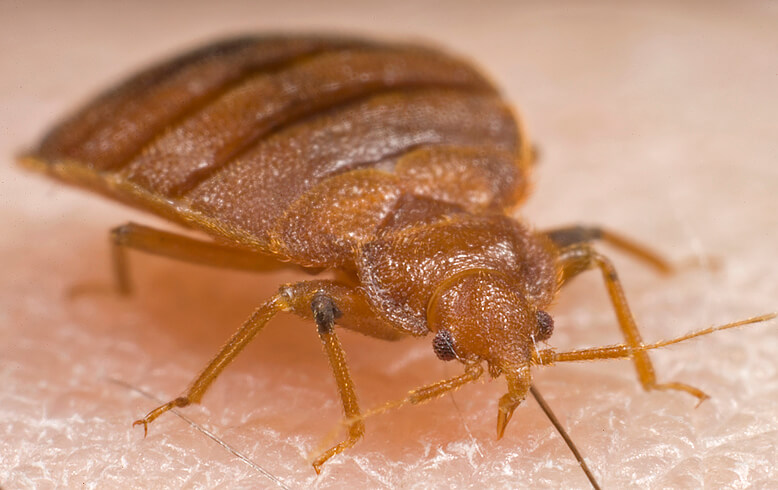
They are flattened across the top. This allows them to slip into tiny cracks and crevices the width of a credit card, which is part of what makes them so hard to detect.
See those ridges on the broadest part of the insect’s body, the abdomen? Those are known as hunger folds. They allow the abdomen to swell so that it can take in more blood in a single meal.


When a bug feeds, the hunger folds expand as its abdomen fills with blood.
But don’t let all these close-ups fool you. Here are some pictures to help you get a sense of this creature’s size.

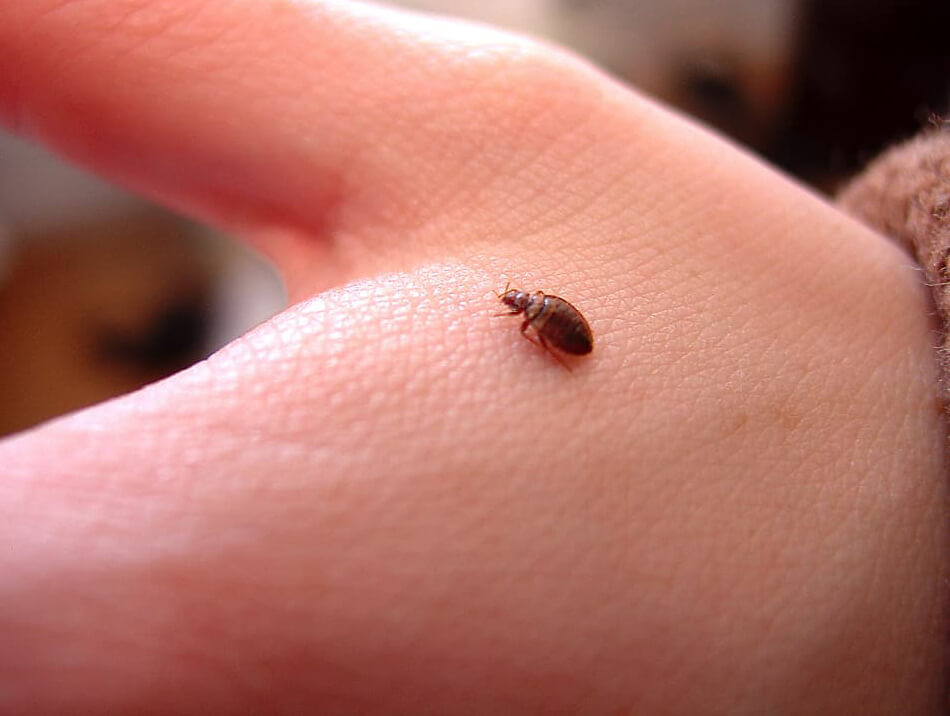

Bed Bug Life Cycle – What Juveniles Look Like
The bugs molt at least five times before reaching maturity. A population will contain all stages of the life cycle. Juveniles, known as instars, resemble the adults. But they are smaller.



As you can see, the instars lack the dark coloring of the adults that only comes with time and repeated blood meals. When they first hatch out, these creatures are tiny and almost transparent, making them extremely difficult to spot.



Eggs
Every bed bug starts its life as an egg laid by a female. Once the female lays an egg, she has no further involvement with its development. The eggs hatch in a matter of days in warm temperatures. At 86°F, a bug can go from egg to adult is little as 21 days, but at 65°F, it could take as long as 120 days.
Females glue their eggs to rough surfaces with a transparent fluid they produce. They tend to lay eggs in clusters, but not always. The eggs are white and around 1/32 of an inch long, so if you have good eyes and the eggs are on a dark surface, you may be able to see them.


This image above shows a fairly typical harborage. You can see adults, juveniles, shed skins, and droppings. The white dots visible on the darker wood are eggs.

You can also see eggs in this image above. The white eggs stand out against the black droppings created by the adults.
Where to Look For Bed Bugs
Now you know what to look for, you’ll want to carefully inspect your home for the presence of these creatures. Start with the mattress seams, box spring, and bed frame, and move outward from there. Other hiding places can include baseboards, upholstered furniture, electrical outlets, peeling paint,and loose wallpaper. Use a flashlight to peer into cracks and crevices, because these creatures love the dark.



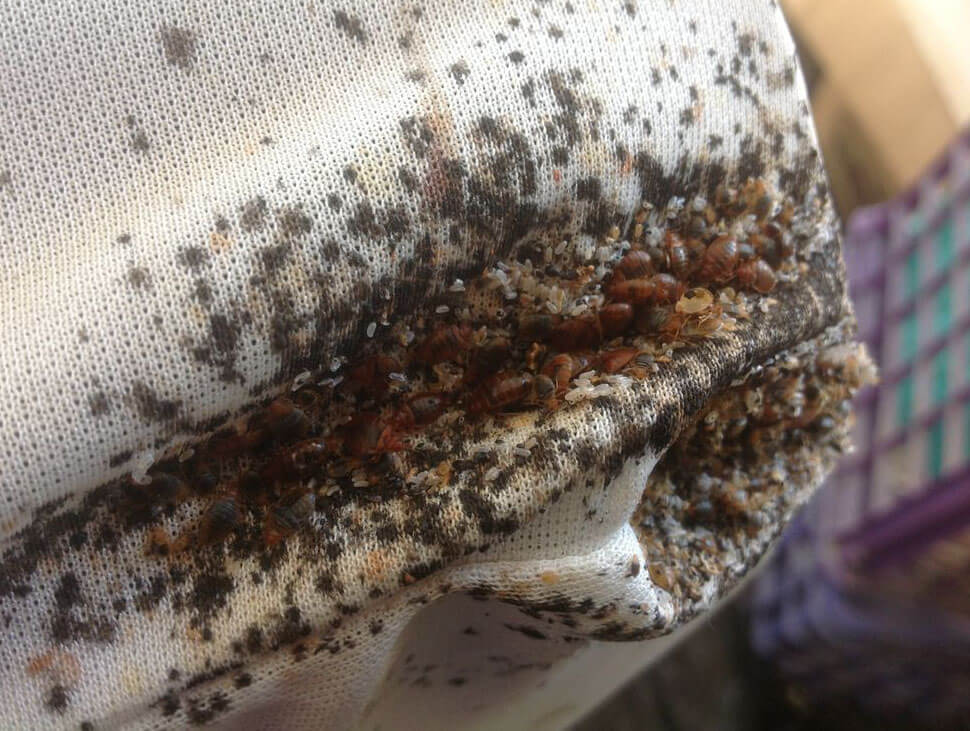
These insects aren’t social in the way that ants or wasps are. But they do like to stick together. Typically, you’ll find bedbugs in aggregations like this. They hide, lay their eggs, and leave their droppings all in the same area.
A population can start with a single insect. An individual won’t feed every day, and it may take some time for your body’s reaction to the bites to build up and create itchy welts. For that reason, you could have a low-level infestation for quite some time without knowing about it.

But a bed bug’s reproductive rate is staggering. A female can lay 12 eggs per day, and up to 500 in her lifetime. This lifetime can be as short as a couple of months in the right conditions. And in warm environments, the bedbug can reach maturity in as little as 21 days.
Also, they reproduce sexually. A population needs both males and females to reproduce. Once a female has mated, she can store the sperm of the male in her body to fertilize future eggs.

This means that bed bug populations can quickly get out of control. A single adult female could have as many as 8000 descendants within six months.
Conclusion
Bedbugs are one of the worst pests to have. Not only are these creatures capable of biting, but they also extremely hard to get rid of. So if you are concerned that you may have an infestation, use this visual guide to help you identify the bed bugs. If you do have bed bugs, the best thing to do may be to call in some professional help. Give us a call now or find local exterminators in your area.

